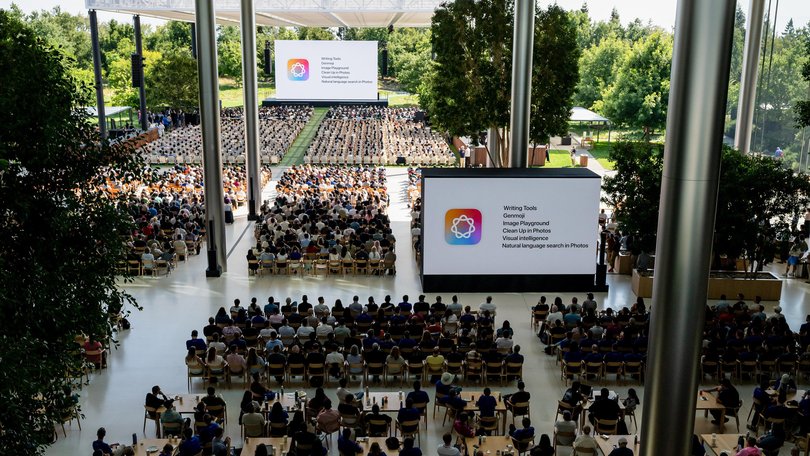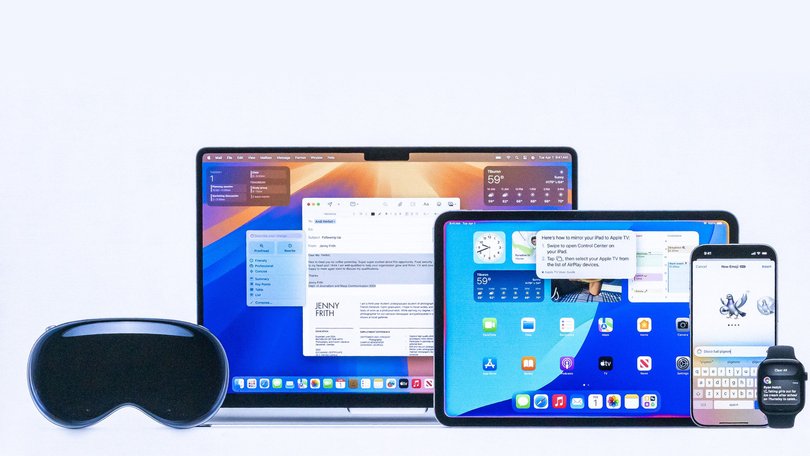The Washington Post: Turning point for look, feel and function in store for Apple users

Your iPhone’s software will soon look very different from what you’re used to. Your AirPods could do even more than play music and serve as hearing aids. And the line between your iPad and your computer may soon get even fuzzier.
These are just a few of the software features and updates Apple unveiled during its Worldwide Developers Conference on Monday, which marked a turning point for the way the company’s most popular products look, feel and function.
Apple’s announcements from it’s Worldwide Developers conference come at a trying moment for Apple, as it grapples with protracted uncertainty over tariffs, the possibility of losing out on App Store revenue as developers rethink how users should pay following a court battle, and lingering doubts about the value of its Apple Intelligence AI tools - software features announced that have sparked two class-action lawsuits over alleged misleading marketing claims in North America.
Sign up to The Nightly's newsletters.
Get the first look at the digital newspaper, curated daily stories and breaking headlines delivered to your inbox.
By continuing you agree to our Terms and Privacy Policy.The company’s share price has shed more than 15 percent of its value since the beginning of the year. (Apple did not immediately comment on the lawsuit).
It will be months before the software updates the company announced become publicly available, but here’s our early sense of what stands to change, and what it means for you.
Apple’s software gets a new look and names
Apple offered a first peek at its new “Liquid” Glass design on Monday, marking the most significant visual overhaul it has made in years. As the name implies, system menus, elements, and apps will become glossier, glassier, and more translucent - much like they appear on Apple’s Vision Pro headset.
By making controls and menus see-through, executives said, you’ll be able to focus more on your content.
In the past, these kinds of design shifts have been polarising for Apple — not everyone loved the flat, digital design the company brought to iPhones in 2013, though versions of it have persisted for more than a decade. But Apple may have pushed for this change for a specific reason: The redesign is reportedly meant to lay the groundwork for a 2027 iPhone redesign intended to commemorate the product’s 20th anniversary, Bloomberg’s Mark Gurman reports.

The names of Apple’s software updates will soon start to make more sense, too. While we’re approaching Apple’s 19th major round of software updates, the company is now tying those names to the year, with this upcoming iPhone software release labeled iOS 26.
Yeah, we know: That’s still a little confusing. Think of those software names like cars, where the releases tied to a new model year are shipped before the current calendar year is over.
iOS gets a flurry of features
The iPhone remains Apple’s flagship gadget, and it tends to get the most attention lavished on it at developer showcases like this. Apart from the hefty redesign Apple has planned, here are some of the most important ways your phone will change when the iOS 26 arrives:
- The Phone app will gain tools to help more easily screen unknown callers, and to sit on hold for you when it detects hold music appearing in a phone call. (Android, for what it’s worth, did this first.)
- Apple’s Camera app, which hosts a boatload of features and options that can be tricky to find, has been streamlined with simplicity in mind. Tools that used to require multiple taps or swipes to discover now (mercifully) take just one or two.
- A more fleshed-out version of the Messages app is coming, with AI-powered text translation - a feature that will also pop up to power captions in FaceTime calls when chatting with international pals. Text messages from unknown senders will also be kept silent and separate the rest of your conversations, though Apple says important messages will still be able to break through.
- IPhones have supported digital driver’s licenses in multiple countries for years, but the company says you’ll be able to use your passport to create a “Digital ID” that can be used for clearing certain TSA checkpoints when travelling within the US. It’s unknown how this might affect Australian users or travellers to the US.
- Apple’s Visual Intelligence tool, which you’d typically use by pointing the iPhone’s camera at something, will now help you learn more about things that appear on your iPhone’s screen.
A better read on Apple Intelligence
Apple unveiled its grand plans for AI known as Apple Intelligence last year. This time, the company took a more subdued approach — no big, boisterous announcements, just a smattering of smaller ones.
App developers will now be able to build tools and features using Apple’s large-language models for the first time, for example. And Apple has focused on especially practical uses for AI this year, like aiding translations for conversations in real-time, and encouraging Apple Watch athletes with a “Workout Buddy” that offers pep talks based on a person’s vitals and fitness stats.

Apple, however, didn’t offer much of an update on high-profile projects like its overhauled virtual assistant, Siri — the company admitted months ago that its next major upgrade, which would give it the ability to interact with apps and learn more about its user’s habits and history, needed to be delayed.
The iPad becomes more Mac-like
Right now, you can buy an iPad that’s as powerful as some of Apple’s full-blown laptops, but there’s very little overlap in how they work. That should change soon.
Apple rebuilt its iPadOS software with more of a focus on multitasking and productivity, including a new feature for running multiple apps in their own distinct windows. You can flick those around, resize them, and access specific options and commands through a new, Mac-like menu bar. (Don’t worry, you’ll always be able to just look at one big app at a time.)
Strangely, Apple seems to consider this feature separate from Stage Manager, the company’s other app window management tool. We found the feature hard to understand when it launched, and it hasn’t changed much since.
You don’t need to buy a pricey iPad to use the feature either; Apple says it’ll work on any model that can run iPadOS 26, including the company’s cheapest tablet.
Originally published on The Washington Post
